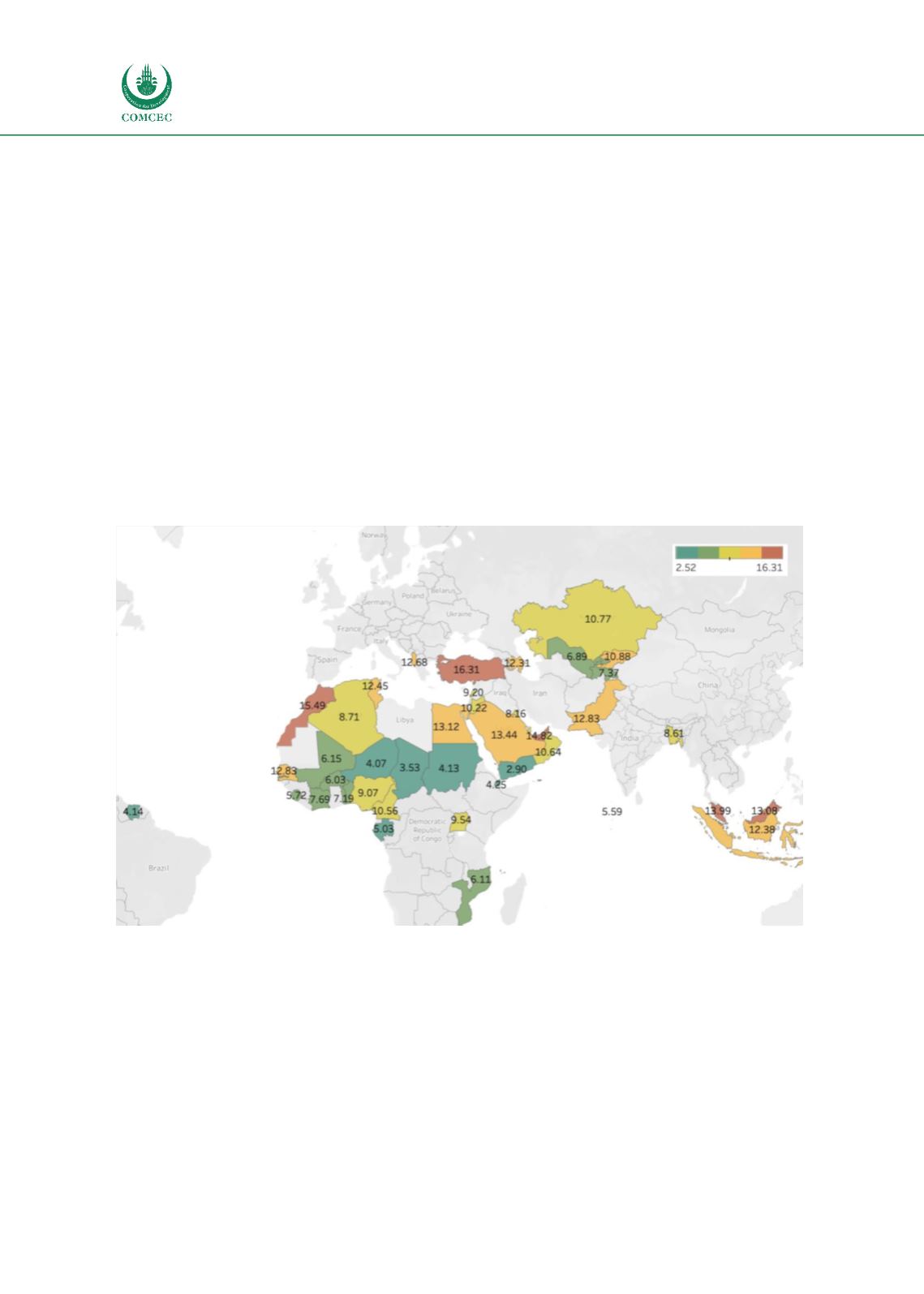

Improving Customs Transit Systems
In the Islamic Countries
104
countries to identify domains that require reforms in order to improve performance based on
the indicators. The OECD TFIs database contains indicators for more than 160 economies across
the globe. Each TFI is consistent with the WTO Trade Facilitation Agreement and contains
several specific and fact-based variables. The indicators are divided into a high-level group of
indicators with the core for each country based on all indicators, intermediate level of indicators
where indicators for each country are more specific and detailed level containing 155 specific
TFIs where 126 indicators are in some way related to the CTR. The TFIs are scored from 0 to 2,
where 2 describe the best possible performance.
A higher score means better performance according to each indicator. The average score for OIC
MS is above 9, and more than 8 points below the best practice score of 17.21. Turkey, Morocco,
UAE, and Malaysia have the best scores among the OIC MS; while Comoros, Yemen, Chad, and
Niger have the lowest scores
(Figure 23).
Figure 23: High-Level TFI score for OIC MS
Source: OECD trade facilitation indicators
Calculation of average scores for every 11 groups of indicators is presented in Figure 24. As can
be seen from the average scores, there are many areas for improvement. The best score (1.22)
is related to the F group of indicators – fees and charges. However, in all other groups of
indicators, the score is below one.
















